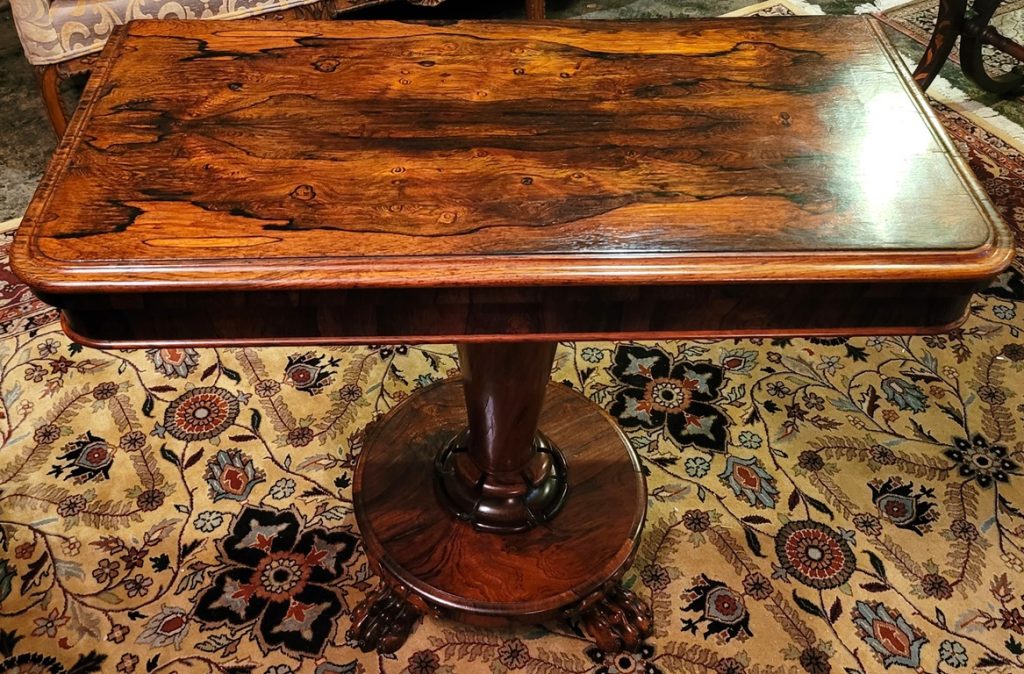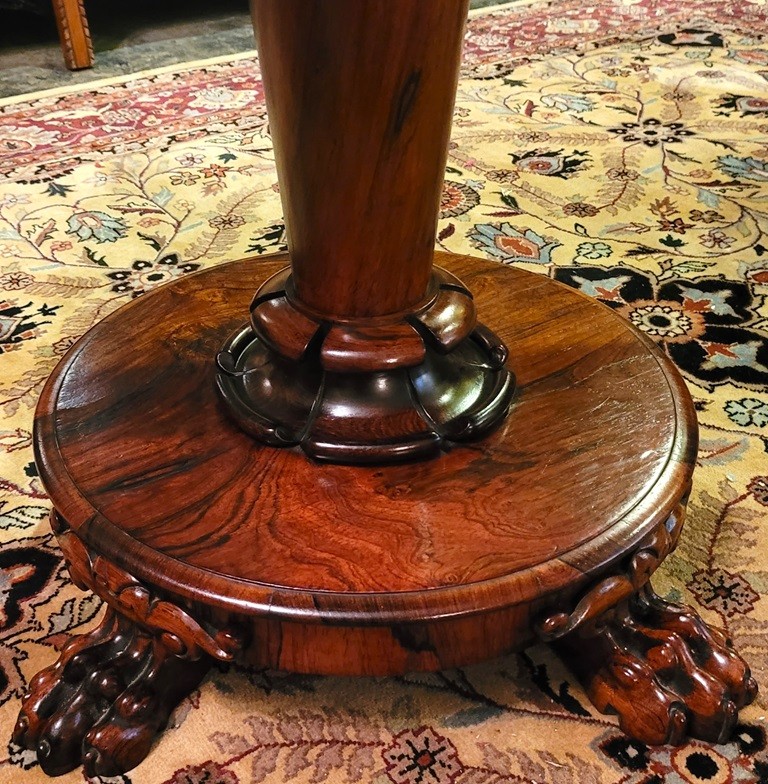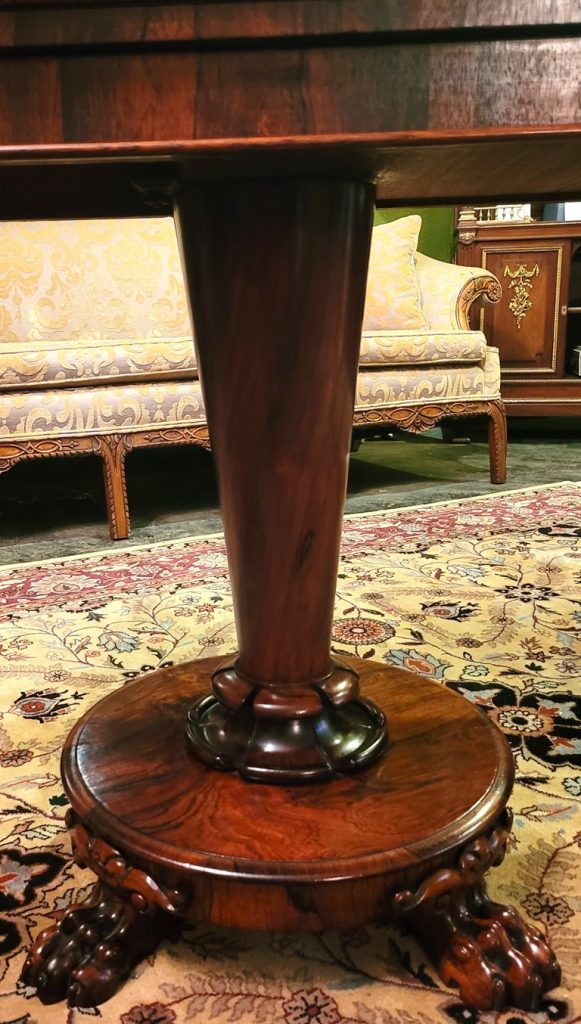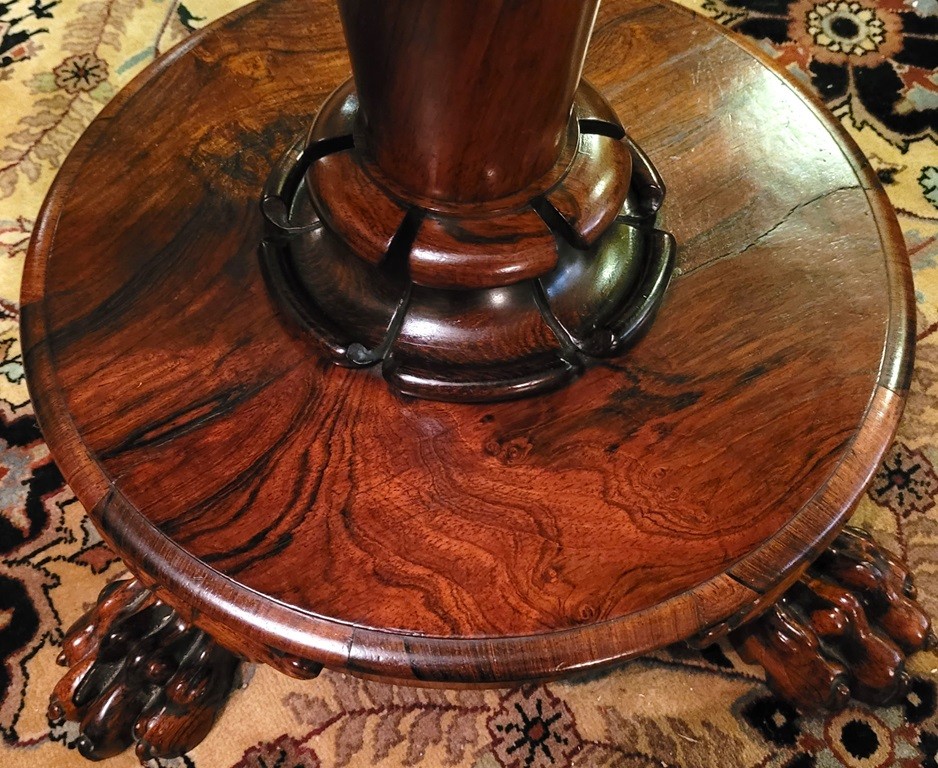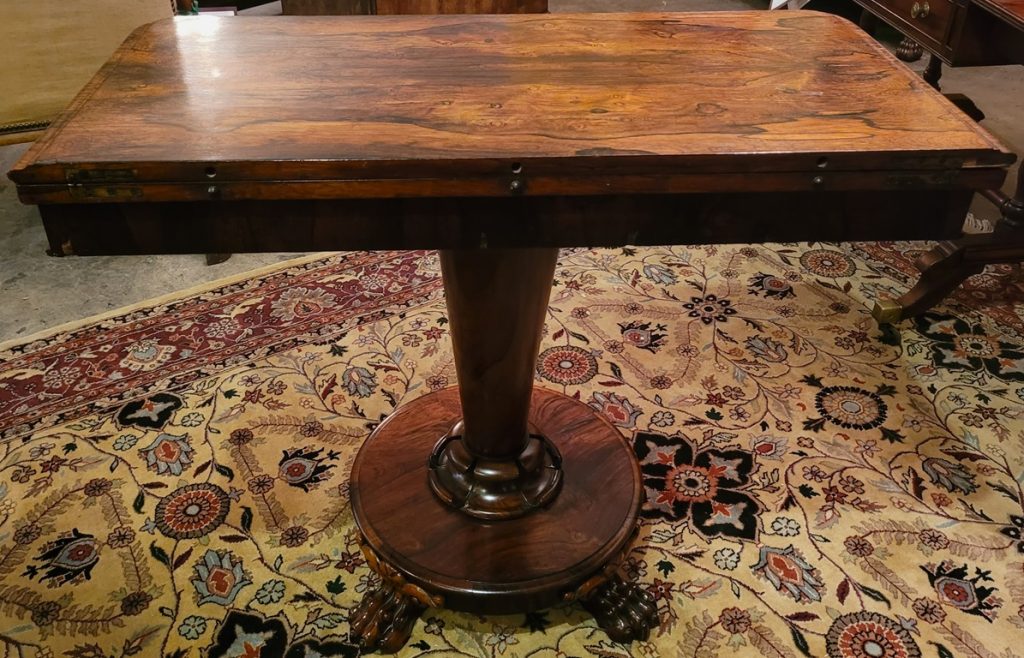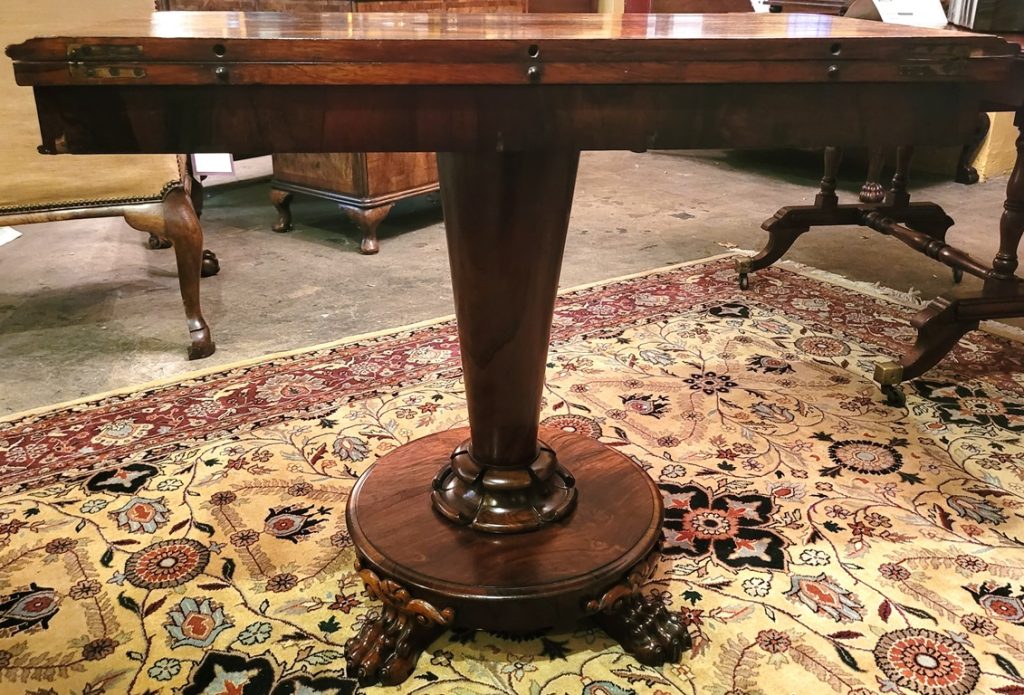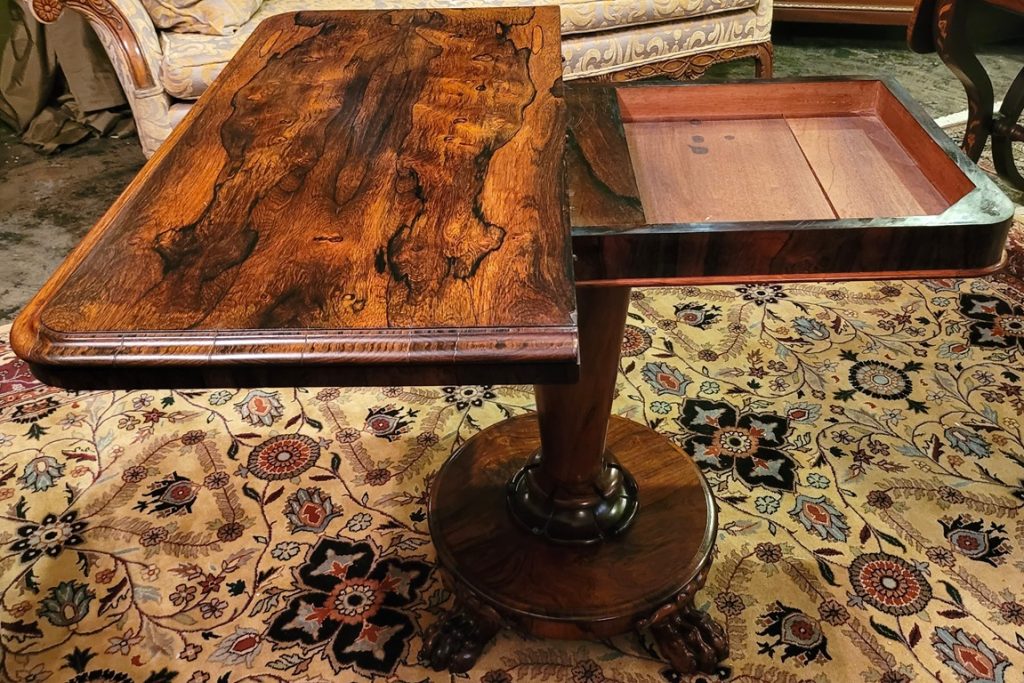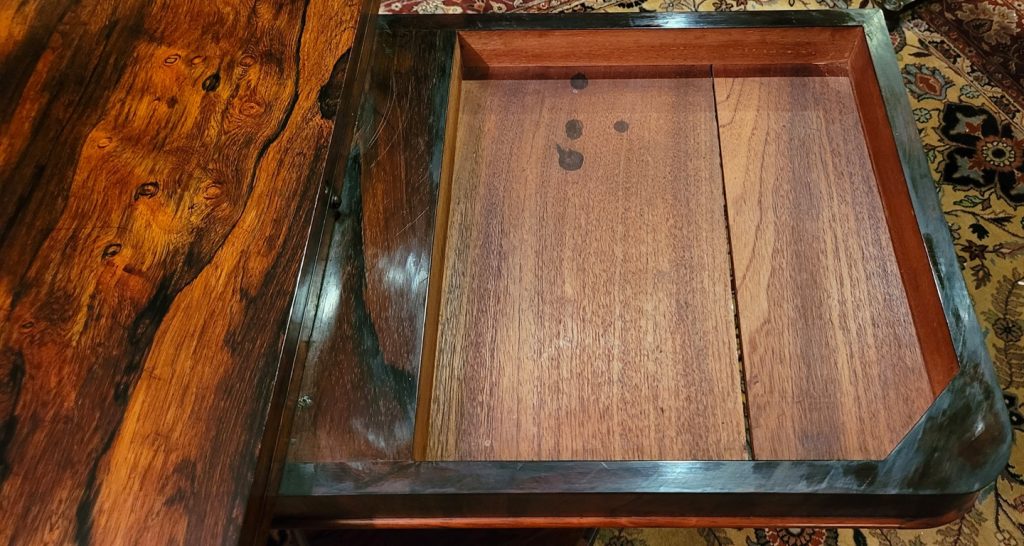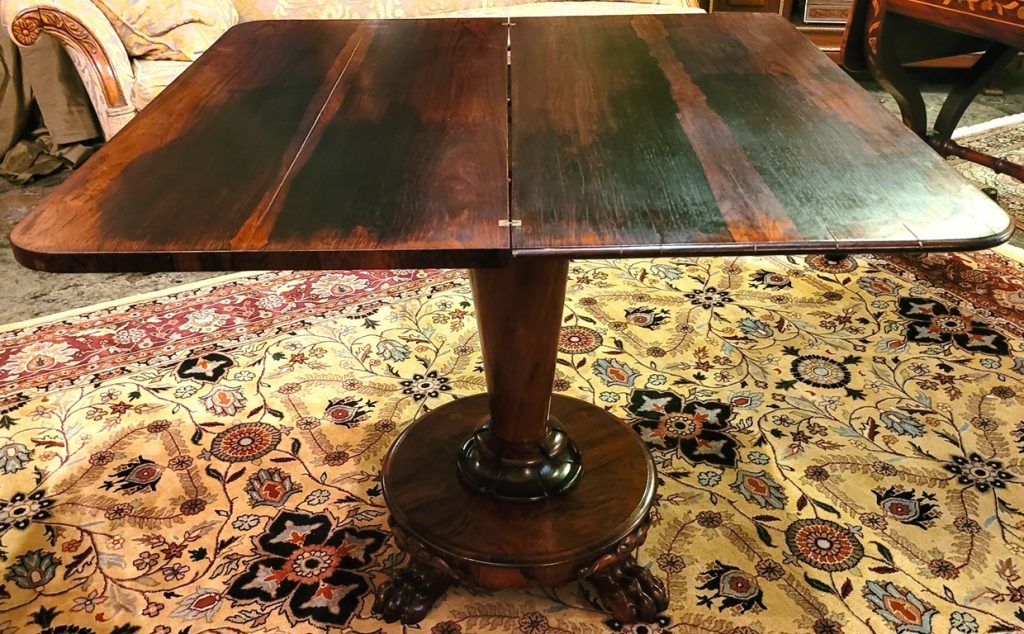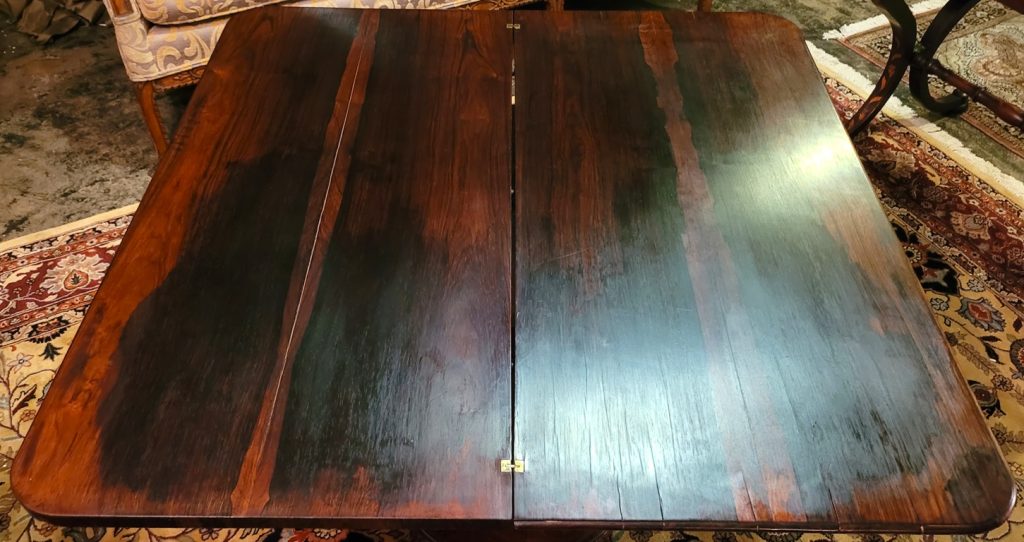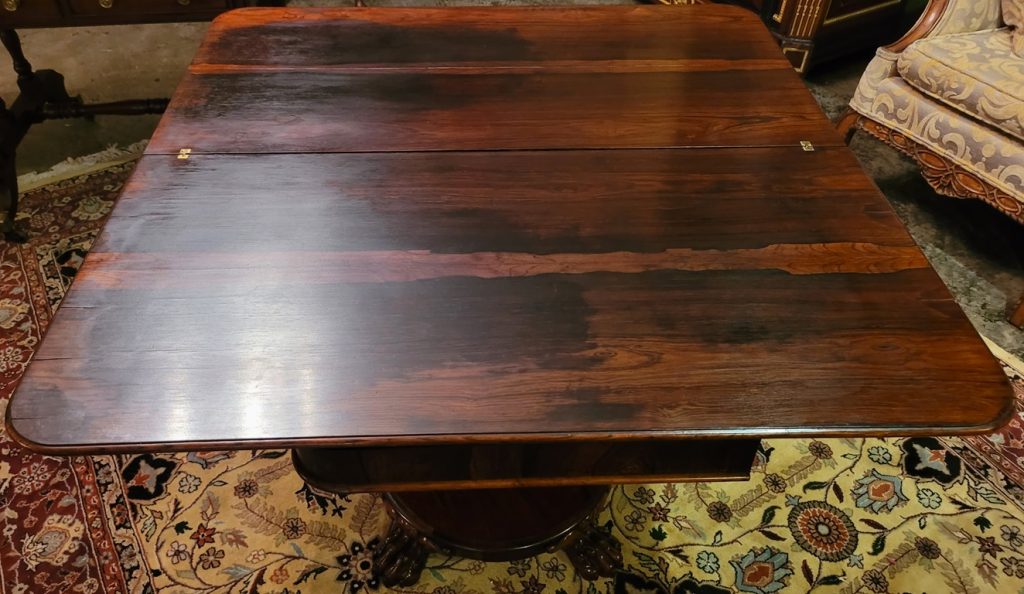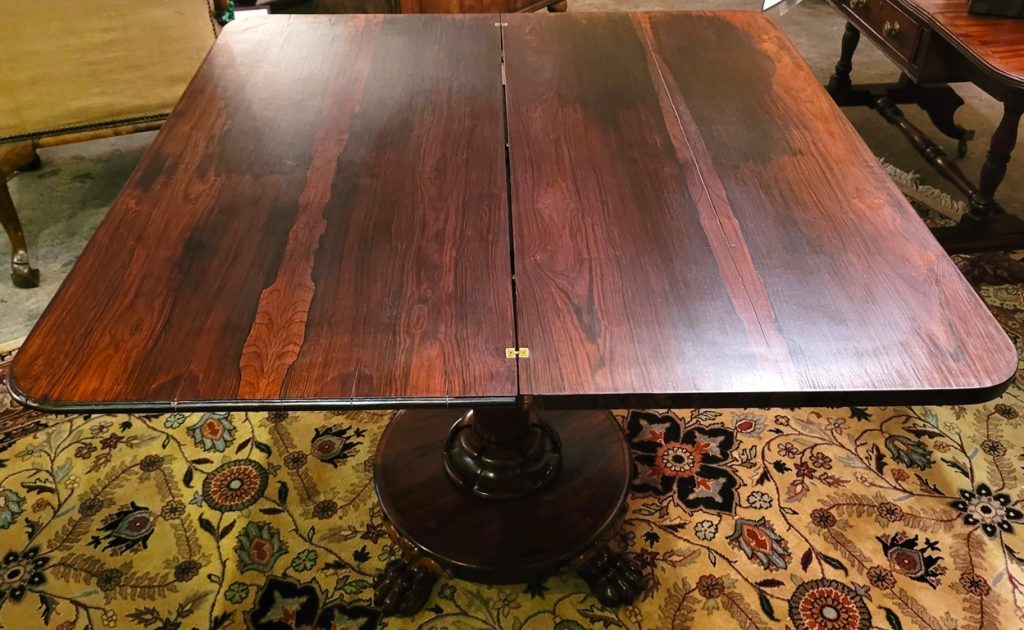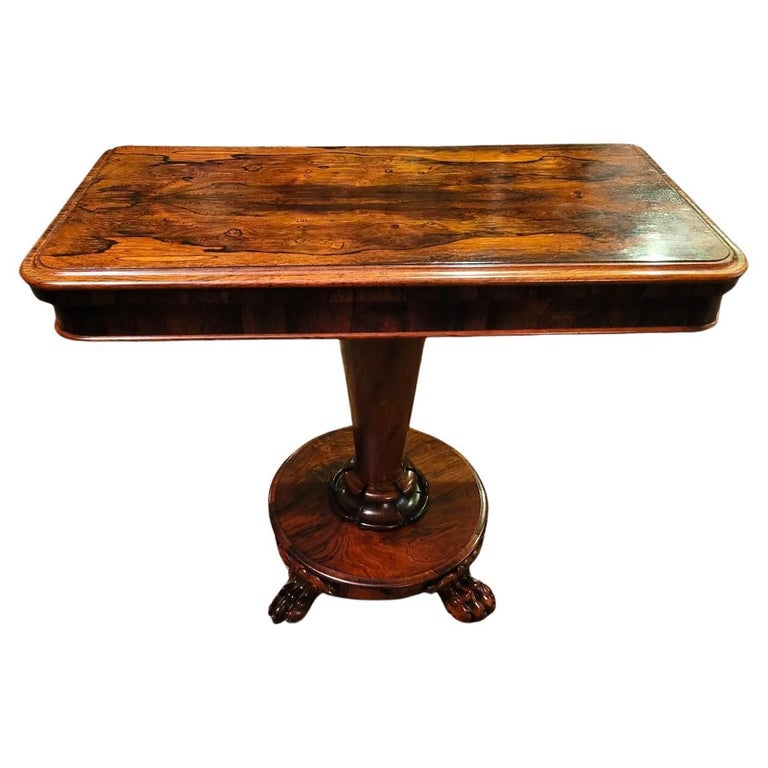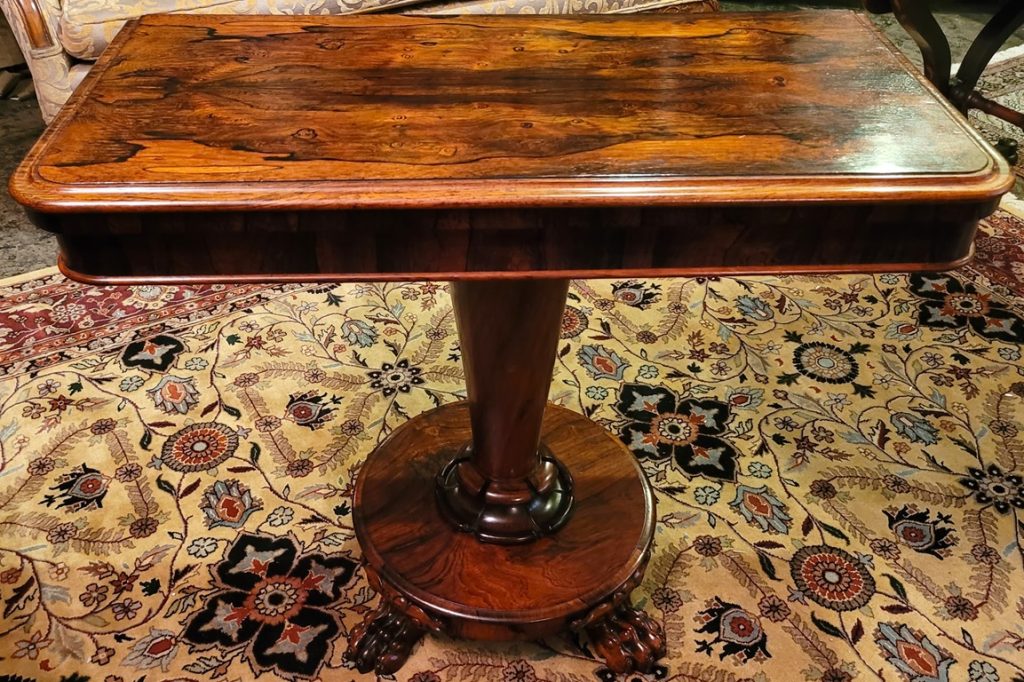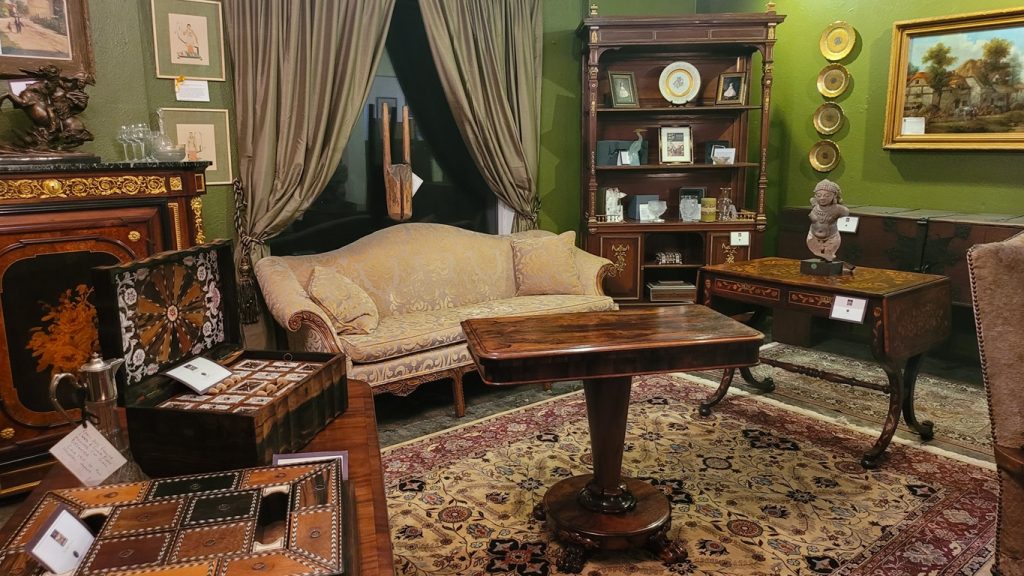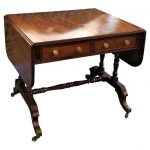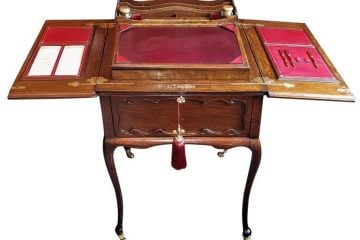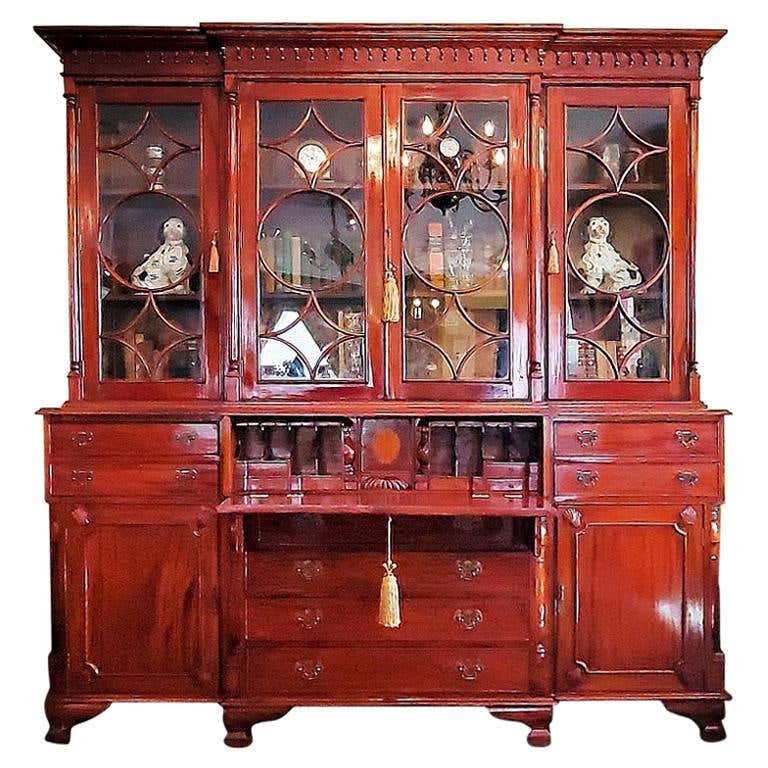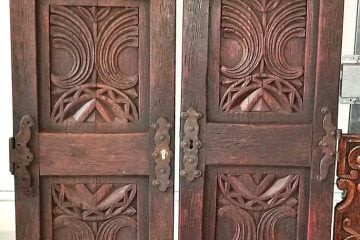Early 19C Regency Fold over Side Table with Lions Paw Feet in the Manner of Gillows
PRESENTING a STUNNING Early 19th Century British Regency Rosewood Fold-over Side Table with Lions Paw Feet in the Manner of Gillows.
‘Period’ British Regency table, from circa 1820.
Made of expensive and exclusive imported hardwood veneers from the Colonies in SE Asia, with a gorgeous grain and patina.
The secondary woods, appear to be ‘elm’.
This is a fold-over side table, the top swings 90 degrees and opens out into 2 leaves.
It also has a drawer underneath, for storage.
It could be used as a card table, but the lack of any ‘felt’ inlay, on the open table, would indicate multiple uses.
The interior table top still retains it stunning original dark patina, whilst the exterior of the table top has aged beautifully and retains a rich red hue, with the darker grain, striking in its appearance.
The table is supported by a graduating cylindrical central column, which narrows downwards, to a circular base with turned tulips style moldings.
The circular base has floral rosette moldings above the 4 exquisitely carved lions paw feet ….. SIMPLY GORGEOUS!
This is a QUALITY piece and would have adorned a very wealthy household only!
Not stamped or marked for the maker, but this is not unusual for ‘Gillows’ pieces which rarely were marked/stamped.
We have no difficulty in attributing this piece to the famous British furniture maker of that time, namely, ‘Gillows of London & Lancaster’.
The quality of the veneers used, coupled with the design and in particular the tulip style moldings to the base of the central pillar and the quality of the paw feet are CLASSIC ….. Gillows!
FABULOUS PIECE OF QUALITY FURNITURE BY A FAMOUS MAKER
BEAUTIFULLY DECORATIVE, BUT ALSO FUNCTIONAL!
REGENCY ERA: The Regency in the United Kingdom was a period when King George III was deemed unfit to rule and his son, the Prince of Wales, ruled as his proxy as Prince Regent. On the death of his father in 1820, the Prince Regent became George IV. The term Regency (or Regency era) can refer to various dates with some given a longer period than the decade of the formal Regency which lasted 1811-1820. The period 1795 to 1837 (the latter part of the reign of George III and the reigns of his sons George IV, as Prince Regent and King, and William IV) is oft attributed as the Regency era characterised by distinctive trends in British architecture, literature, fashions, politics, and culture. The Regency era formally ended in 1837 when Queen Victoria succeeded William IV.
Link: https://en.wikipedia.org/wiki/Regency_era
Gillows of Lancaster and London, also known as Gillow & Co., was an English furniture making firm based in Lancaster, Lancashire, and in London. It was founded around in Lancaster in about 1730 by Robert Gillow (1704–1772).
Gillows was owned by the family until 1814 when it was taken over by Redmayne, Whiteside, and Ferguson; they continued to use the Gillow name. Gillows furniture was a byword for quality, and other designers used Gillows to manufacture their furniture. Gillows furniture is referred to by Jane Austen, Thackeray and the first Lord Lytton, and in one of Gilbert and Sullivan’s comic operas. In 1903 Gillows merged with Warings of Liverpool to become Waring and Gillow and although the furniture remained of a high quality it was not as prestigious.
By the mid-18th century the firm was one of the leading cabinet-makers in Lancaster. They had a reputation for manufacturing very high quality furniture. By the end of the 1700s most of the firm’s partners were based in London. The firm merged with a Liverpool firm in 1897 to form Waring & Gillow.
Gillow family (1728–1814)
In 1728 Robert Gillow began trading in Lancaster as a joiner, builder, house carpenter, furniture maker and overseas merchant. By the summer of 1731 he had entered into a partnership with a fellow catholic, George Haresnape, which had ended by 1735. By 1734 six other names appeared on their staff list. Gillows notably made heavy use of mahogany wood, which is indigenous to the Americas, from the early 1730s. In the early 1740s, Gillow owned a twelfth share of the ship Briget, which he partially used to import mahogany from the West Indies. The success of the firm was partly due to his ability to directly import mahogany; by 1742 Gillow was exporting finished mahogany furniture back to the West Indies.
On 1 January 1757 Robert entered into an equal partnership with his son Richard Gillow (1733–1811), and the firm was known as Robert Gillow & Son. Richard was also the architect for several buildings in Lancaster. He financed the building of the catholic church in Dalton Square, Lancaster in 1798. The family’s Catholic history was important in building up a customer base within Lancashire’s gentry, and their subsequent purchase of Leighton Hall, Lancashire from a cousin in 1822. On 31 December 1768 Robert Gillow I retired and left his share of the firm to his other son, Robert Gillow II (1747–1795). In 1769 and 1770, a shop at 176 Oxford Street, London, was sent up by the brothers’ cousin, Thomas Gillow (1736–1779), to sell their furniture. Goodison and Hardy state that the firm opened a London branch in 1760 at 176 Oxford Road. By 1775 the Lancaster branch had 42 employees, and by 1789 there were about 50 employees.
Pieces of Gillow furniture can now be seen in museums in London, Leeds, Adelaide, Melbourne, and Auckland, as well as a collection in the Gillow Museum in the Judges’ Lodgings, Lancaster. The furniture can also be seen in houses open to the public such as Tatton Park.
Link: https://en.wikipedia.org/wiki/Gillows_of_Lancaster_and_London
Early 19C Regency Fold over Side Table with Lions Paw Feet in the Manner of Gillows
Provenance: Bought from a reputable dealer in the UK.
Dimensions: 29 inches tall, 36 inches wide and 35.7 inches deep (open) and 17.8 inches deep (closed)
Base: 18 inch diameter
Condition: Very good. Some very minor chips to the veneer, on the base and to the rear of the closed table top. These are not very noticeable or visible and do not detract from the piece in any way.
SALE PRICE NOW: $8,400
